How to build and automate a referral program for your business
With this recipe, you’ll learn how to identify your highest value users and then automate referrals for your business.
Jun 2, 2020
By Calvin French-Owen
Twilio Segment Personas is now part of Segment’s Twilio Engage product offering.
On the back of the success of companies like Dropbox and Airbnb, referral programs are increasingly used to fuel a company’s growth engine.
That’s because this type of word of mouth acquisition really works. An incredible 92% of people say that they trust peer recommendations more than traditional advertising.
To get your referral program off the ground, the trick is to solicit referrals from those most likely to refer your product, like your power users and others who’ve benefited most from using your product.
Traditionally, identifying these customers has been a time-consuming hassle.
It involves running manual queries against data to build audience segments, downloading CSVs, formatting them, uploading them to different tools, then repeating this process every month to avoid stale data.
Thankfully there’s a way to automate this.
With Segment Personas’ drag-and-drop interface, you can build custom segments of your customers within seconds. You can segment by criteria such as total purchase value and frequency of engagement.
Simply define your audience once, then Segment will sync it across all your third-party tools like Mailchimp, Customer.io, or Zapier so you can automate your referral outreach.
Let’s run through it step by step.
Step 1: Identify your most valuable customers
This recipe assumes you have Segment installed, and that you’re tracking purchase events. If not, check out our documentation.
Let’s say you wanted to identify all your customers who have spent more than $500 in the past 90 days.
First, we’ll compute the sum of a customer’s total purchases:
Log into Segment.
Navigate to `Personas` > `Computed Traits`.
Click “Create a `Computed Trait` “ and choose `Aggregation`
Then set up your configuration, as shown below. Here’s what we’re telling Segment: Find all users that have triggered the `Order Completed` event then tally up the total value of their purchases in the past 90 days.
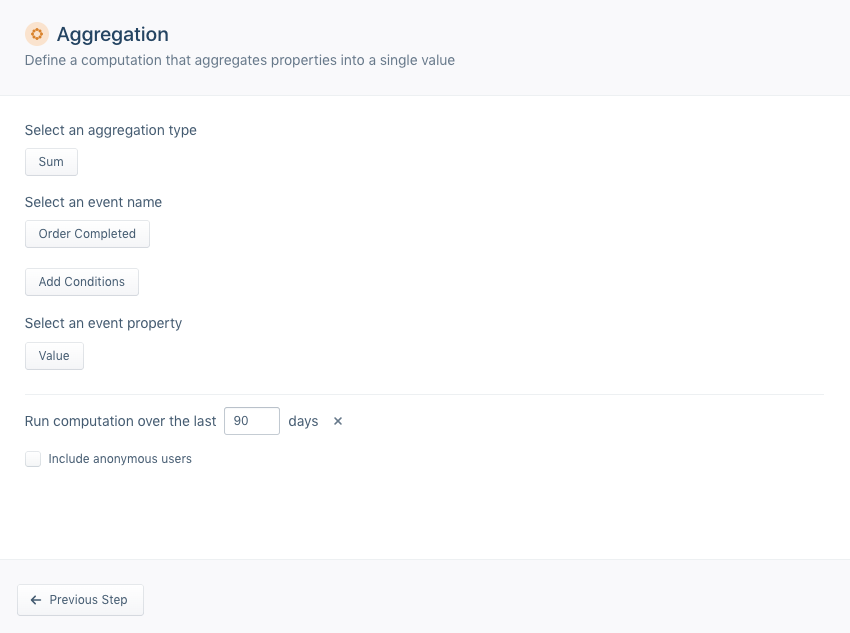
5. Click `Preview`, and then `Review & Create`. 6. Choose the destinations you want to send this data to. For example, an email marketing tool, Google Analytics, or anything else in your stack that integrates with Segment. (You can also skip the “Connect Destinations” for now and come back to it later.) 7. Name the computed trait clearly, like “90-day purchasers – total purchases.” 8. Check the checkbox that says “Compute without enabled destinations” if you don’t have a destination set up yet. (We’ll do this later in the recipe.)
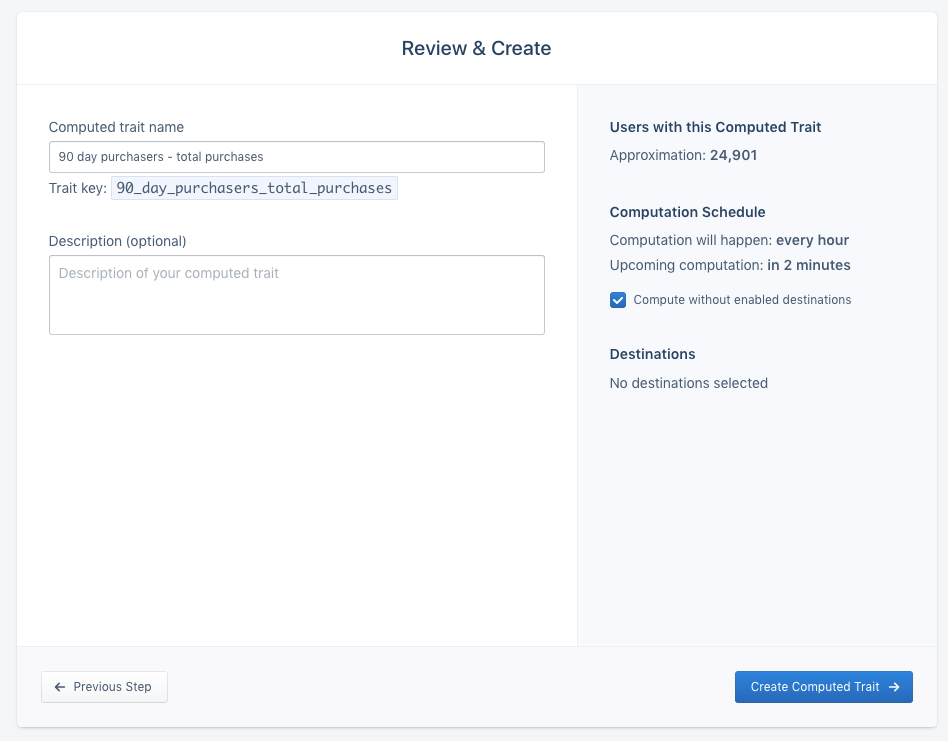
9. Click Create Computed Trait.
Not a Segment user yet? Get started with a demo here 👉
Step 2: Build the audience segment
1. Go back to `Personas` and click on the `Audiences` tab. 2. Click `Create Audience` 3. Click `Add Condition`, select `Have a Computed Trait`, and choose the trait we just created. 4. Set the condition to be `greater than`, and add in `500`.
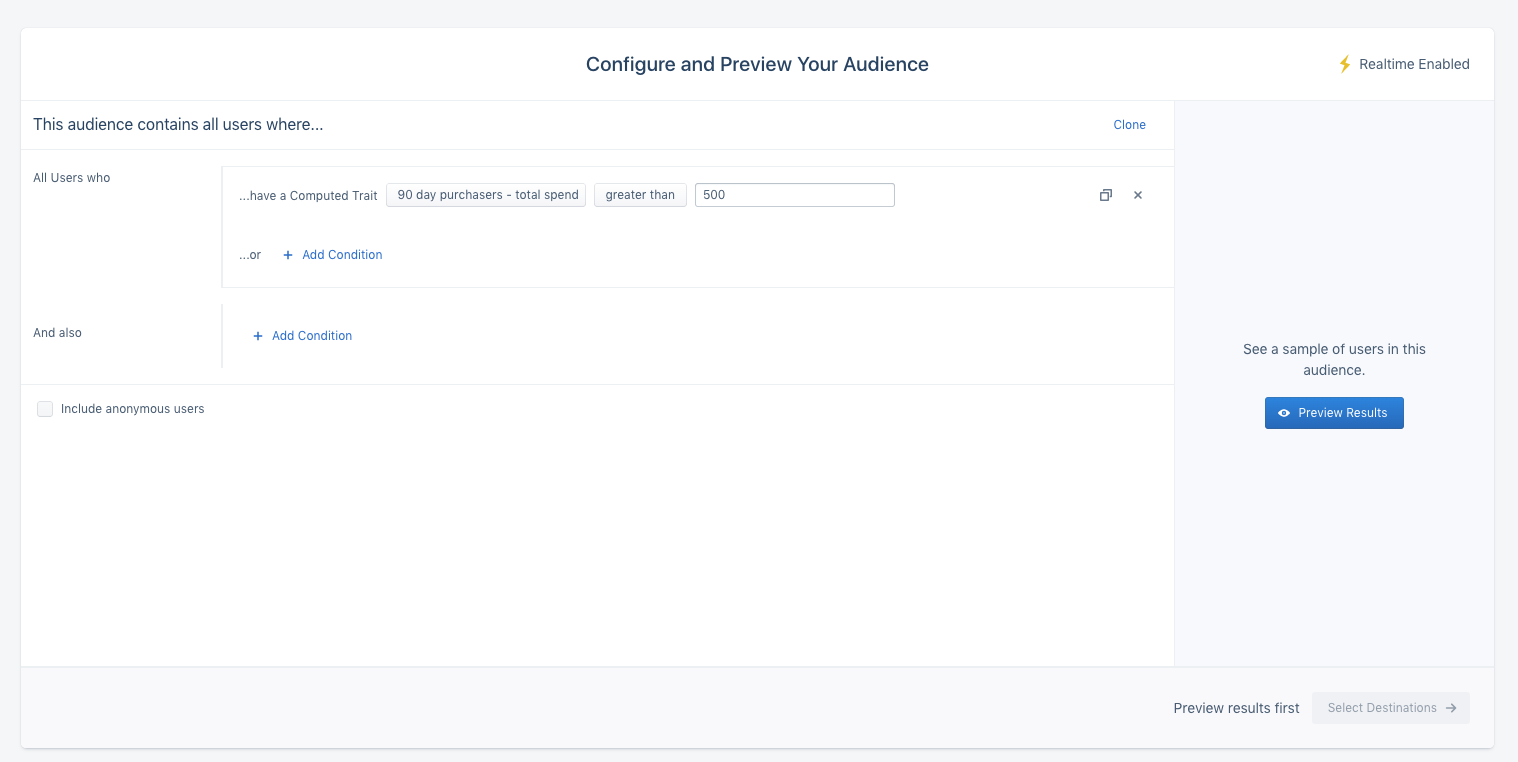
5. Click `Preview`, and follow the steps to `Review & Create`. 6. Name your audience `90 days big spenders` and click `Create Audience`. Make sure to leave the “Gather historical data” checkbox toggled on.
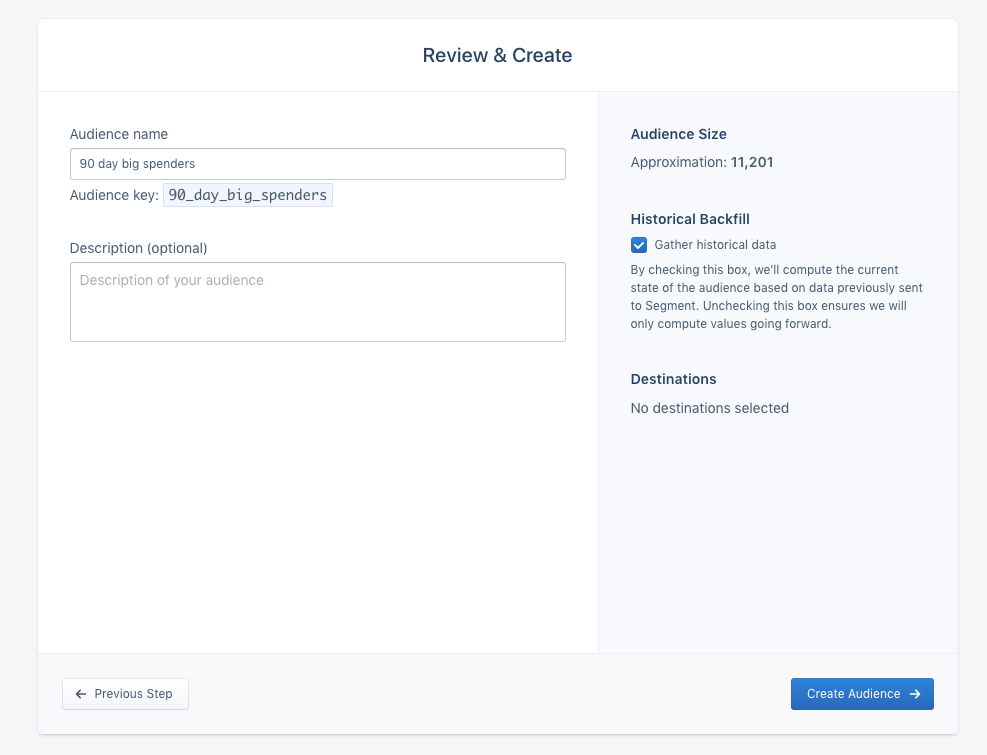
You’ve made an Audience! You now have a living, breathing segment of your most high-value customers to sync to anywhere.
Note there are many other ways we could have filtered to our top users:
The amount of time they spent in our app
Their average order size
Top purchasers by product category
And whatever makes the most sense for your product
Our next step is to set up Segment Destinations to pass these audiences onto our third-party tools, such as our email marketing software. That’s where we’ll send our referral outreach from.
Step 3: Set up your destinations
Every third-party tool has its own setup, but the steps are always the same within Segment:
Log into Segment, and navigate to `Personas` > `Destinations`.
Click `Add Destination`. Search for your tool, click on it, and click `Configure`.
Complete the configuration settings based on the tools’ requirements.
Finally, connect the Persona audiences you built with the destinations as discussed in the previous section.
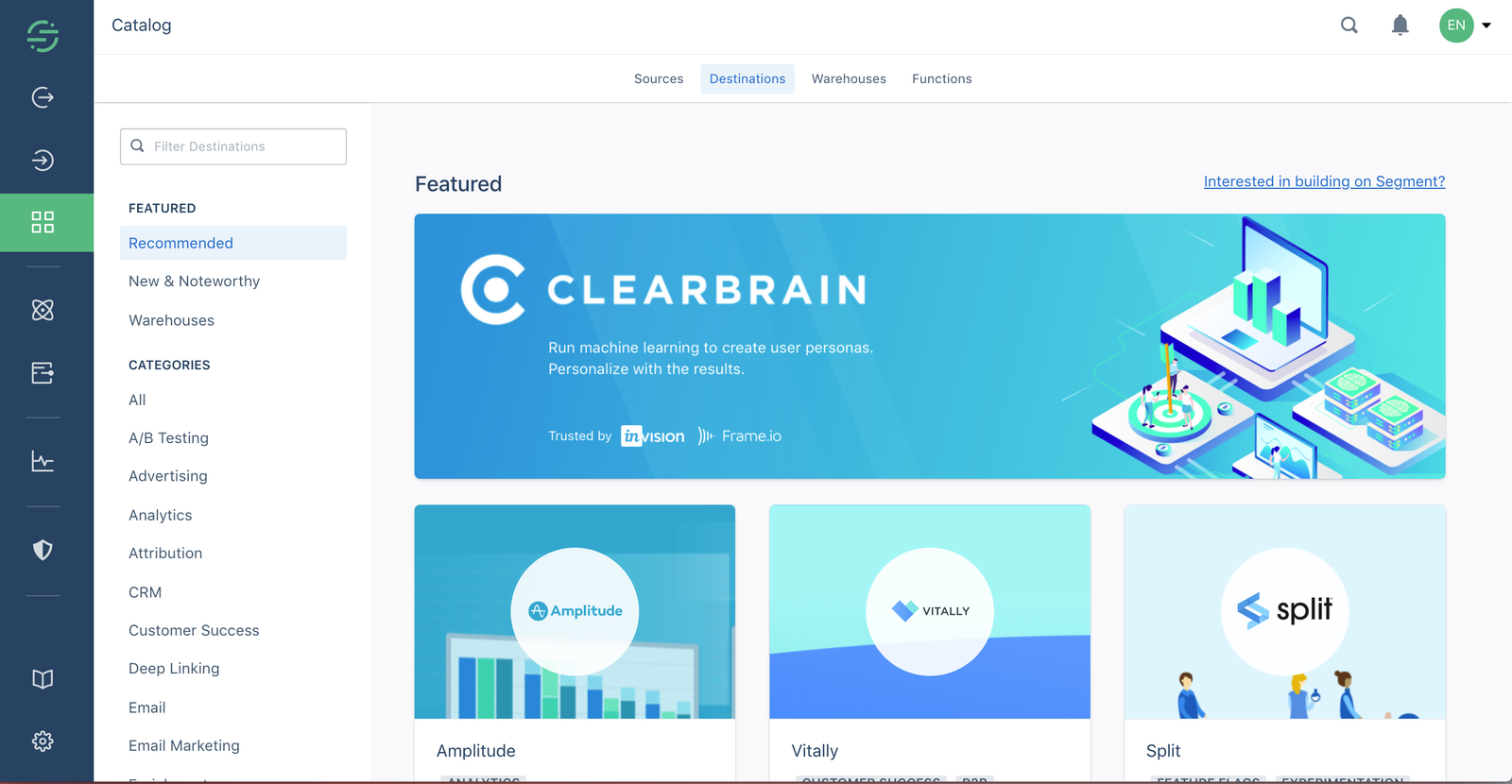
Which tools should you use for automating drip and transactional emails? For email marketing, Mailchimp and Customer.io are great choices that give you both power-user features and a simple UI for building beautiful emails.
You won’t need to pull in engineering to build outreach campaigns.
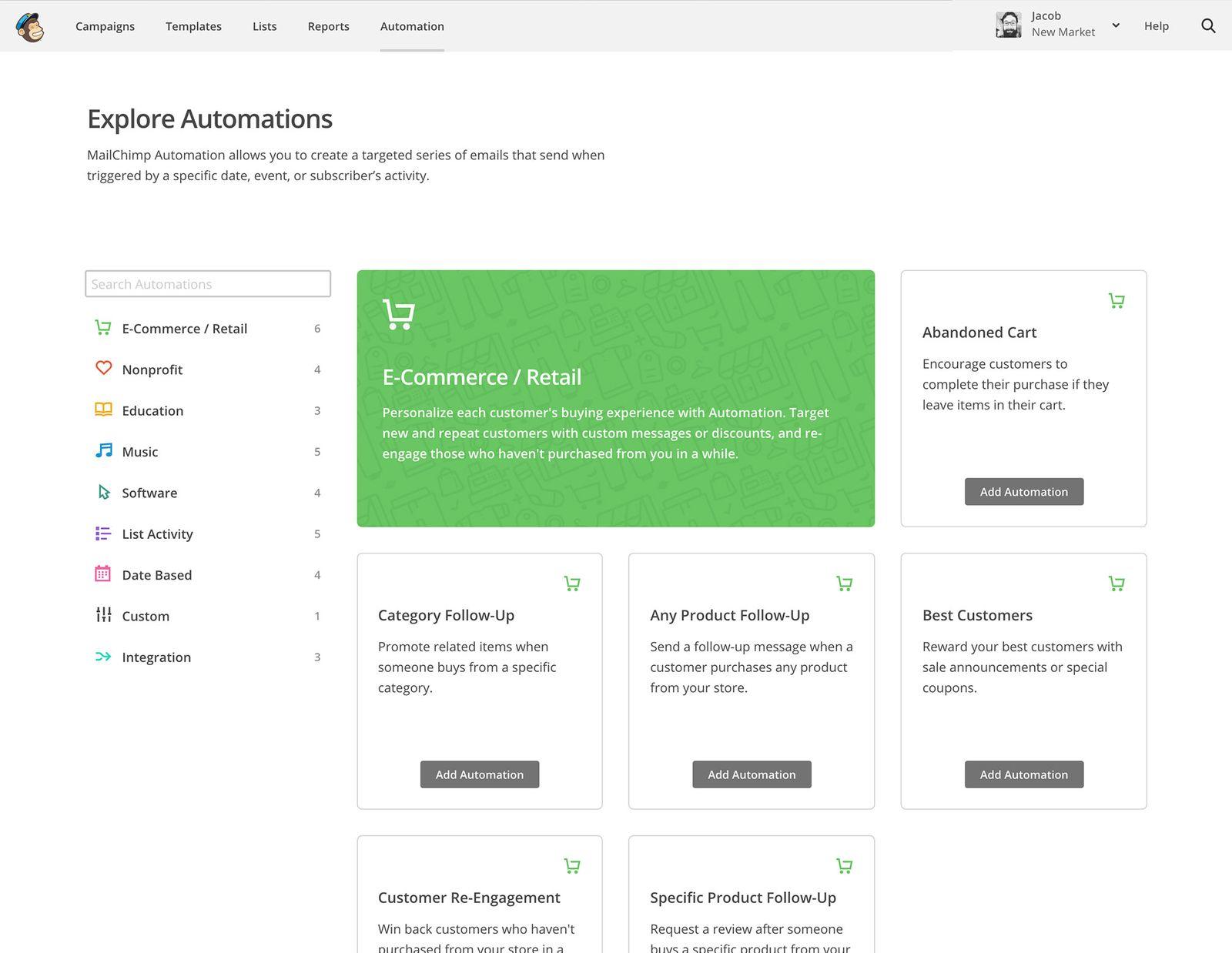
We also recommend Zapier if you’re looking for something that’s channel-agnostic.
For example, maybe you want to send notifications through push, text, or Slack messages. Zapier is a Swiss Army knife for automation. You can Zapier alongside Segment to automatically send referral prompts when a visitor crosses the power user threshold in your app.
Talk with a Segment team member to get help with this part 👉
Step 4: Email outreach
A successful referral email will differ depending on whether you're B2B or B2C, but no matter what type of business you have it should:
Make your customers feel genuinely valued — that they’re not the recipient of thoughtless spam.
Propose an incentive that gets them excited to share with friends.
Explain how the referral program works.
Make the next actionable step clear and easy. (e.g. coupon codes, social sharing buttons, referral pages, etc.)
B2C
For B2C, the referral email should come shortly after they’ve made their purchase.
Reach out to thank them and to remind them that their product is on the way — to keep them excited about their recent purchase.
You can make your reward incentives memorable by keeping them short and simple. Things like:
Give $20, Get $20: Refer a friend and you both get $20 off your next purchase.
Give your friends a free {Product X} when they purchase with your referral code.
Viral-Loops is a tool that lets you design referral programs, and takes care of everything from email design to the logistics of execution and management of campaigns.
B2B
B2B requires a more hands-on approach. Their referrals are typically worth more, and so the labor is justified.
Here’s an example of a referral email:
Hi {First Name},
I saw that you recently started using {Our Product} and that your team is exploring our {Feature/Service they're using the most}.
I'm John, one of the founders here. I just wanted to check in to see if you have any suggestions for us — maybe features you want us to build out while you use the product.
If you're happy so far, I'd also appreciate it if you could refer anyone that you think might benefit from using our services. I'd be happy to give you $500 off your next month for every referral.
Feel free to reach me and schedule a call at this link if you'd like to discuss further.
Best,
John
Referral growth tactics
When prompting customers to refer, timing is key: reach out when (1) you’re still top of mind for the customer and (2) when they won’t dismiss your email.
Here are a few tactics:
Consider your customers’ time zones when reaching out. Don’t reach out at 2AM if you can avoid it. With Segment, you can segment customers by geography and send emails at optimal times.
Identify your most recently active top users. Why? Your product’s benefit will still be fresh in their minds. For example, if you’re an app that lets people send money to friends, and you’ve identified that the tipping point for engagement is five transfers, send them a notification to refer their friends at that very moment. If you sent this too early, they’d dismiss the notification as annoying because they’ve not yet fallen in love with your product. This is easily computed using Segment’s filters.T
he same tactic applies for B2B but with the outreach done via sales or support instead. Identify your most active users and your biggest spenders so your sales team can offer a high-touch outreach experience with a tailored message. You can do this via email or a messaging platform like Intercom. Using Segment’s integrations means that the audience data will always be up to date and synced with your communication tools. No more manual CSV downloads and uploads to various platforms.
Re-activate your past big spenders by incentivizing them to return through referral bonuses. For example, someone that buys an expensive pair of sneakers will be more interested in a targeted email campaign six months down the line when their shoes are starting to wear out. Offer them a special promotion where they gain a significant discount by referring a couple of friends.
For B2C, you can offer exclusive deals and rewards for your biggest influencers and advocates. You can use a tool like Viral Loops to simplify this process: it does the heavy lifting of setting up the infrastructure to design, track, and manage referral campaigns. Furthermore, the Segment integration syncs your campaign results back to Segment so you can continually refine your messaging across all your channels, including your website, app, and email outreach.
Try this recipe for yourself...
Get help implementing this use case by talking with a Segment Team member or by signing up for a free Segment workspace here.
The State of Personalization 2023
Our annual look at how attitudes, preferences, and experiences with personalization have evolved over the past year.
Get the report
The State of Personalization 2023
Our annual look at how attitudes, preferences, and experiences with personalization have evolved over the past year.
Get the report
Share article
Recommended articles
How to accelerate time-to-value with a personalized customer onboarding campaign
To help businesses reach time-to-value faster, this blog explores how tools like Twilio Segment can be used to customize onboarding to activate users immediately, optimize engagement with real-time audiences, and utilize NPS for deeper customer insights.
Introducing Segment Community: A central hub to connect, learn, share and innovate
Dive into Segment's vibrant customer community, where you can connect with peers, gain exclusive insights, and elevate your success with expert guidance and resources!
Using ClickHouse to count unique users at scale
By implementing semantic sharding and optimizing filtering and grouping with ClickHouse, we transformed query times from minutes to seconds, ensuring efficient handling of high-volume journeys in production while paving the way for future enhancements.